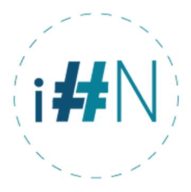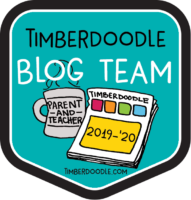Math is not often included in the learning-through-play list of subjects, but it doesn’t have to be that way. Your child can learn math through play, especially if you are showing them how. Even play, on some levels, is taught.
When our babies have mastered peek-a-boo, and stacking a box tower, it is not time to stop teaching them how to play, they are just ready for more complex play.
By the time your child is a kindergartner they are practically an expert in play, but not quite. You still know how to play more games than they do. Numbers need to start right now. I am not even going to pretend that they don’t. I don’t care if you rush out and buy a workbook, but you better be counting with your kid.
To become an expert in any subject we need to spend how many hours? Many claim 10,000 hours, so yeah, you better start now. But why does my child need to be an expert in numbers you may ask?
Numbers are truth. Math teaches children how to think. Do we need to discuss the current need for computer programmers in the job market and how understanding math will make better programmers? But that is not for this post.
Here we want our focus on the sweet smiling face of our possibly still chubby cheeked five-year-olds. You see, they need you to play with numbers with them. When you do that you show them that numbers are not scary and you will ignite their curiosity surrounding numbers.
Playing math can be as simple as breaking out a Parcheesi game. It may be tedious helping your child learn to move one space as he says each number, but there is really no better way for them to learn one-to-one correlation of counting. Parcheesi can continue to keep your child playing and learning with numbers for years, as they get older they get better at figuring out creative ways to combine those doubles in order to capture their opponent and win the 20 space forward movement reward.
There are many foundational concepts surrounding numbers that kids figure out anywhere between age 3 and 7. You don’t have to push them to figure these things out at a certain point in time, but you can greatly encourage them by knowing what those concepts are and challenging them in fun ways.
One important concept is counting. We often think this is basic and just a matter of reciting numbers in order, but knowing the names and order of the numbers is only the linguistic side of counting. Mathematically they have to master the concept of one-to-one. Each object gets one number. And those numbers have to be handed out in a certain order.
I am not going to go into detail about every concept they need in order to build a solid foundation for future mathematics. I am just going to emphasize that more is happening in their brains than we realize, even when it appears to us that they are just playing. The more complex play we expose and introduce them to, the more opportunity their brain has to process those concepts.
Here are some resources I found helpful and fun for incorporating number play with young children. In addition to board games, lots & lots of board games.
Teddy Bear Math, just type that into the Amazon search bar and you will see several different books and little plastic teddy bear’s you can get to use along with the books.
Learning Resources 120 Mat Floor Game, this game served us well for several years, there are so many activities you can do with a hundred mat and little one just love spreading this out on the floor and getting to stand on answers. It’s WAY better than just writing down the answer…at least my wiggly little boys thought so!
Singapore Math Home Instructors Guide, I am not going to say which level you should get, because that depends on your child. I would look over the concepts covered in the first couple of books and let that inform your decision. This book will give you, the teacher, a solid grasp on what number concepts your child needs to understand and how to teach them. This guide includes many fun activities and games to both teach and reinforce concepts. Of course, they have a workbook and textbook, but the instructor’s guide is the heart of the program and I think at this age the other books are optional.
Honestly, I could go on and on listing fun stuff, but I think just the three things above will be plenty to keep you busy playing with math throughout the year.
If your child is a quick study in math you may want to consider an old gem of a book I found, Walks and Talks in Numberland, it is a textbook from 1925 designed to cover everything from K-2nd-grade math. It is sweet, easy to use, and will keep your math whiz moving onto new concepts before they have time to get bored.


